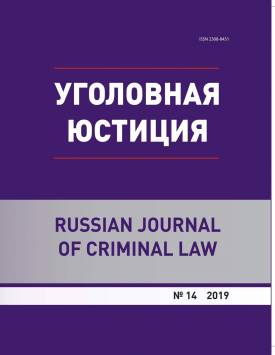Frequency of Recidivism Among Convicts with Non-Custodial Sentences
Crime recidivism among those convicted and sentenced to non-custodial sentences is an important criterion for the effectiveness of the execution of criminal punishments not related to isolation from society. This effectiveness cannot be increased without understanding the qualitative characteristics of recidivism in this category of criminals. The frequency of recidivism contributes to understanding the stable antisocial motivation of convicts and the degree to which the goals set for criminal punishment are achieved. It can also indicate the effectiveness of the punitive effect. The highest "recurrent" period can be determined through the analysis of the criminal activity of convicts, taking into account the time elapsed from the moment of conviction, registration or deregistration to the commission of a new crime. The practice and results of the study has shown that the majority of repeated crimes committed by persons sentenced to non-custodial sentences is committed during the first year after registration and deregistration. Therefore, it is advisable to analyse recidivism in terms of its frequency during the indicated criminologically significant periods. Regardless of the punishment type and offense qualification, the majority of repeated crimes is committed in the first six months from the moment of registration, while after serving the sentence and deregistration the criminal activity fades. The author concludes that a significant part of convicts, as a rule, perceive criminal punishment not as punishment, but as "forgiveness", which predetermines their criminal activity especially in the first months after registration, which requires more intensive work with convicts by the penal inspections, especially in the indicated recurrence period.
Keywords
рецидив, криминологический рецидив, криминальная активность, рецидивоопасность, интенсивность, личность, relapse, criminological relapse, criminal activity, recurrence, intensity, personalityAuthors
| Name | Organization | |
| Drozdov Igor S. | Prosecutor's Office of Shegarsky District, Tomsk Region | crim.just@mail.ru |
References

Frequency of Recidivism Among Convicts with Non-Custodial Sentences | Ugolovnaya yustitsiya – Russian Journal of Criminal Law. 2019. № 14. DOI: 10.17223/23088451/14/23
